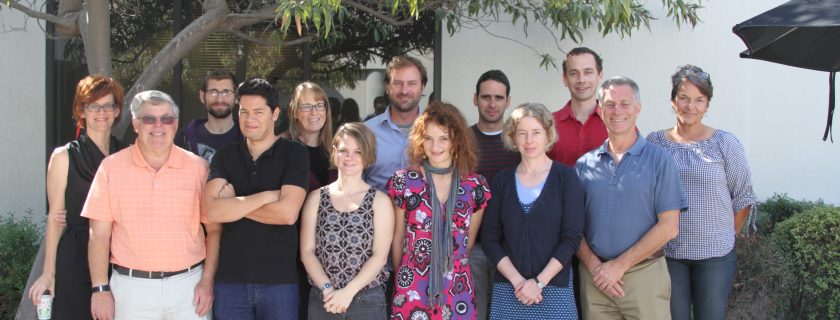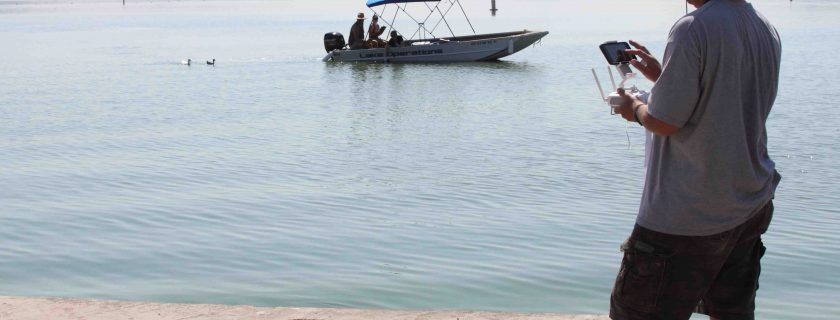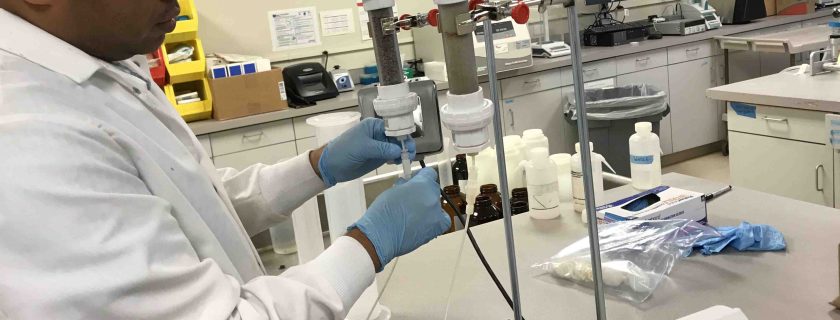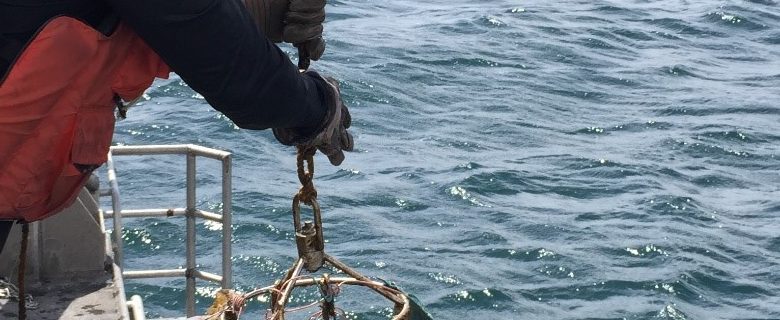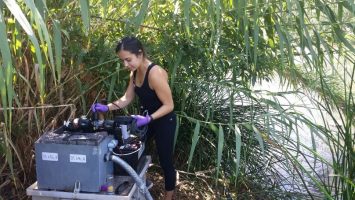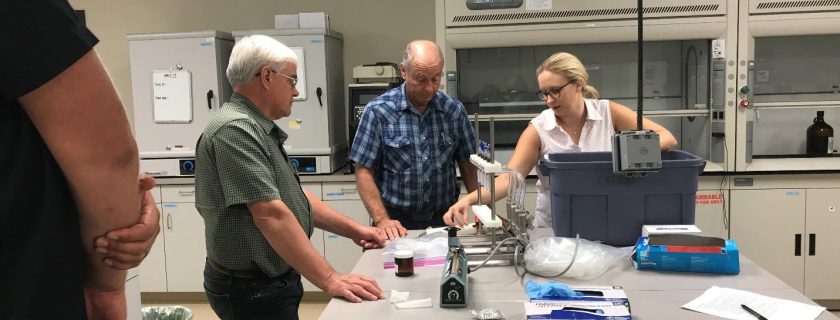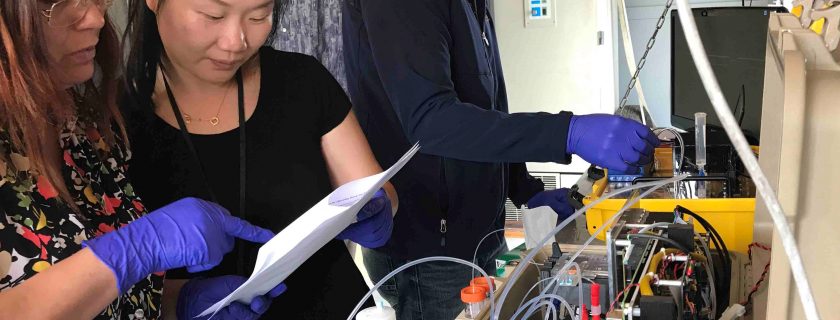SCCWRP and its partners have initiated a study examining whether an algal toxin known as domoic acid can linger in seafloor sediment following a harmful algal bloom (HAB) event. The … More
Articles by: genus
International expert panel convened to develop acidification thresholds for pteropods
A 10-member panel made up of leading global experts on pteropods, or sea snails, convened at SCCWRP in September to develop consensus around biologically relevant thresholds at which these ubiquitous … More
Effort launched to adapt UAS to monitor HABs in lakes
SCCWRP and its partners have launched an effort to adapt commercially available unmanned aerial systems (UAS) for routine monitoring of lakes susceptible to ecologically disruptive cyanobacteria blooms. UAS technology – … More
Bioretention soil media being tested to compare effectiveness at treating stormwater
SCCWRP and its partners in October launched a year-long project to test the performance of six types of bioretention soil media designed to remove pathogens, indicator bacteria, nutrients, metals and … More
Passive samplers retrieved from Channel Islands for international oceanic pollutants study
SCCWRP and its partners in August successfully retrieved two sets of passive sampling arrays that were deployed over a two-month period near the Channel Islands to help establish baseline concentrations … More
Fish exposed to flowing river water to monitor for biological changes
SCCWRP and its partners exposed fish to flowing Los Angeles River water for two weeks in September as part of a pilot study examining potential biological impacts from exposure to … More
Ocean acidification model development moves into second validation phase
West Coast researchers working to develop a computer model that predicts how the region’s coastal waters will be affected by ocean acidification and hypoxia have advanced to a second phase … More
Field data collection completed for Santa Margarita River nutrient management study
SCCWRP and its partners have completed field data collection for a three-year project seeking to establish scientifically defensible nutrient loading targets for reducing eutrophication and improving biological integrity in the … More
Utah officials trained on HABs monitoring techniques at SCCWRP
SCCWRP in August trained representatives from the Utah Department of Agriculture and Food on techniques for monitoring harmful algal blooms (HABs) in irrigation systems in Utah, part of an effort … More
Microbial contamination detection device to undergo more R&D after malfunction
A field-portable instrument prototype designed to improve the speed at which beach water can be analyzed for microbial contamination did not perform reliably during an initial field test and will … More
